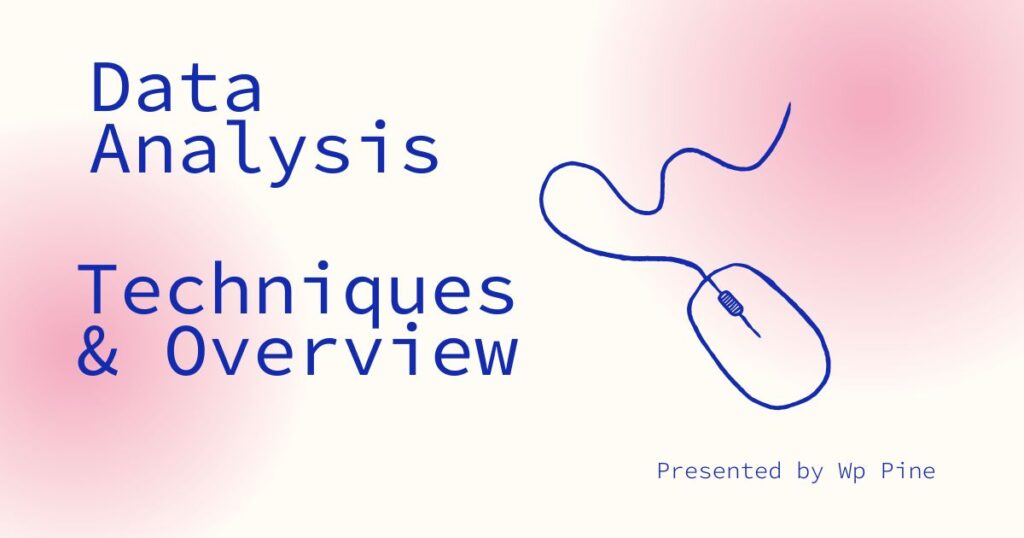A solid understanding of data analysis is essential for transforming vast amounts of raw data into actionable insights, enabling solutions to a diverse array of challenges across industries. Data analysis serves as the foundation for informed decision-making, offering clarity and direction in complex scenarios.
This comprehensive guide delves deeply into the core principles, advanced techniques, and practical tools that define effective data analysis. It also provides actionable tips and real-world use cases, making it a valuable resource for both beginners seeking a strong start and seasoned professionals refining their expertise. By bridging theoretical knowledge with practical applications, this article empowers readers to harness the full potential of data analysis in addressing multifaceted problems across various domains.
Introduction to Data Analysis
Data analysis refers to the procedure of scanning through data to identify pertinent facts, make recommendations, and arrive at conclusions. It is widely used in areas including business intelligence, healthcare, finance, marketing, and research. Data analysis is a process that involves knowledge of statistics, domain knowledge, and appropriate tools for translating data into information and eventually knowledge.
Key Data Analysis Techniques
Descriptive Analysis:
- Definition and Methods: Descriptive statistics involves measuring the basic properties of a dataset. Common measures in this regard are central tendency. Histogram and Box Plot: These aid in visualizing data distribution and help recognize ‘outliers’.
Exploratory Data Analysis (EDA):
- Definition and Techniques: EDA involves the exploration of datasets to summarize their main characteristics through visualization methods and statistical summaries. These techniques include data visualization, which involves scatter plots and heat maps, summary statistics such as means and variance, and correlation analysis.
Inferential Statistics:
- Definition and Methods: Inferential statistics is a method in statistics that involves the use of data from samples to make inferences or predictions about the characteristics of a larger population. Among these techniques are hypothesis testing, confidence intervals, and regression analysis in making inferences beyond direct observations.
Predictive Modeling:
- Definition and Techniques: A predictive model is created from data to project outcomes, using statistical techniques and machine learning algorithms. Some common techniques that are applied in predicting trends, behavior, and future events include regression analysis, decision trees, random forests, and neural networks.
Machine Learning Algorithms:
- Definition and Applications: These algorithms enable a computer to learn from its input data to make a prediction or a decision without explicit programming. In applications are supervised, unsupervised, and reinforcement learning for classification, regression, clustering, association, reward-based learning, image recognition, natural language processing, and recommending systems.
Text Analysis (Text Mining):
- Definition and Techniques: Text analytics is a process of extracting meaningful insights from unstructured text data. There are many techniques of Natural Language Processing, like Sentiment Analysis, Topic Modeling, and Text Classification that are used in the analysis of vast volumes of textual data emanating from sources such as social media, customer reviews, and publications.
Time Series Analysis:
- Definition and Methods: Time series analysis is an examination technique on data points acquired at regular time intervals, which aims at checking a series for patterns and hence making forecasts. Techniques that fall under it include decomposition, smoothing methods, autocorrelation analysis, and improved forecasting models such as ARIMA, an acronym for AutoRegressive Integrated Moving Average.
Tools for Data Analysis
The essence of any data analysis process lies in how proficient the tool or tools employed to try and deduce specific information out of the data are. Some tools include:
- Python: Python is a multi-purpose language, supplemented by libraries like Pandas, NumPy, and SciPy for data manipulation and analysis. The Python ecosystem has rich support for statistical analysis, machine learning, and visualization. See more about python.
- R: It is a dialect designed for statistical computing. It has packages like ggplot2, dplyr, and caret that cover statistical modeling, visualization, and data manipulation. R is widely used in academia and research because it is capable of doing statistical computing. See more about R Language.
- SQL (Structured Query Language): SQL—Structured Query Language—language for managing and querying relational databases. This skill is critical to extract, transform, and analyze structured data hosted in a database. See more about SQL.
- Tableau, Power BI: Business intelligence tools for data visualization by creating an interactive dashboard or report from numerous sources. See more about PowerBi and Tableau.
- Jupyter Notebooks: A web-based, open-source application that enables the creation of documents with embedded code, equations, visualizations, and narrative text. Jupyter Notebooks are applied extensively to data science to document analysis workflows or collaborative projects. Learn more about Jupyter Notebooks.
Best Practices in Data Analysis
One should maintain good practices along the analysis pipeline so that the data analytic work has an associated degree of accuracy, reliability, and relevance:
- Data Cleaning and Preprocessing: Treat missing values, outliers, and inconsistencies in datasets for quality and reliability.
- Documentation and Reproducibility: Document data sources, methodologies, and assumptions so that they are transparent, reproducible, and auditable for analyses.
- Validation and Sensitivity Analysis: Validate findings using appropriate statistical methods, sensitivity analyses, or cross-validation techniques that will attest to the model’s performance and generalizability.
- Ethical Considerations: If you will deal with sensitive or personal data in your work, be certain that it ensures its privacy, confidentiality, and ethical considerations, especially about dealing with this kind of data. Ensure compliance, where appropriate, with regulations like the GDPR or HIPAA governing the use and protection of data.
Real-World Applications
Data analysis techniques find applications across diverse industries and domains:
- Healthcare: Analyzing patient records for disease diagnosis, treatment optimization, and healthcare management.
- Finance: Predicting market trends, risk assessment, fraud detection, and algorithmic trading strategies based on financial data.
- Marketing and Customer Analytics: Customer segmentation, campaign performance analysis, sentiment analysis, and personalized marketing strategies based on consumer behavior data.
- Manufacturing and Operations: Quality control, predictive maintenance, supply chain optimization, and process improvement based on production data and IoT sensor data.
Challenges in Data Analysis
While powerful, data analysis comes with challenges that require careful consideration:
- Data Quality: The assurance of its accuracy, completeness, and consistency to avoid biases and unreliable insights.
- Complexity: Handling large volumes of data, high-dimensional data, and streaming real-time data requiring scalable techniques of analysis and corresponding infrastructure.
- Interpretation and Communication: This refers to communication during analysis results to non-technical stakeholders and ensuring actionable insights from the findings of Gos Humphries.
Future Trends in Data Analysis
With increasing volumes of data and advancing technologies, there is a host of trends that is shaping up the future of data analysis
- Artificial Intelligence (AI) and Machine Learning (ML): Industry integration of AI/ML algorithms for automated data analysis, pattern recognition, and decision-making.
- Edge Analytics: Analysis at the edge, IoT devices, or sensors for enhanced real-time insight with reduced latency and decentralized data processing.
- Ethics and Governance: To drive actions toward data ethics and transparency with governance frameworks managing privacy concerns and ensuring security, responsible data sharing, and use.
Conclusion
Data analysis methodologies play a pivotal role in transforming raw data into actionable insights, enabling organizations to make informed decisions that align with their business objectives. By leveraging diverse strategies, approaches, and techniques, businesses can enhance their ability to analyze and utilize data effectively, fostering innovation, driving change, and maintaining a competitive edge. As the field of data analysis continues to evolve, staying abreast of emerging methods and trends is essential for professionals seeking to excel. By continuously refining their expertise and exploring new opportunities, data analysts can deliver meaningful results that propel organizational growth and success in an increasingly data-driven world.
Additional Resources
For further reading on Data Analysis best practices and tools, consider exploring the following resources:



